Colors in the Bible hold profound spiritual significance, serving as a symbolic language to convey divine messages and truths. Their meanings extend beyond aesthetics, reflecting God’s character and plan, while also communicating relationship and spiritual depth.
1.1 The Significance of Colors in the Bible
Colors in the Bible are a divine language, serving as powerful symbols to convey spiritual truths and God’s character. They are deeply rooted in rituals, prophecies, and divine revelations, offering insights into God’s plan and humanity’s relationship with Him. Each color carries specific meanings, reflecting aspects of God’s nature, such as grace, mercy, and judgment. These hues are not merely aesthetic but are woven into the fabric of biblical narratives, worship, and prophecy, making them essential for understanding the depth of Scripture and God’s divine communication.
1.2 Understanding the Spiritual Meaning of Colors
Colors in the Bible are a divine language, conveying spiritual truths and God’s character through their symbolism. Each hue represents specific aspects of His nature, such as grace, mercy, and judgment. Red symbolizes flesh and sacrifice, while blue embodies heaven and the Holy Spirit. Green signifies immortality and restoration, reflecting divine promises; These colors are not static but dynamic, revealing deeper truths about God’s plan and humanity’s spiritual journey. Understanding their meanings enriches worship, prophecy, and the interpretation of biblical narratives, connecting believers to God’s divine communication and purpose.
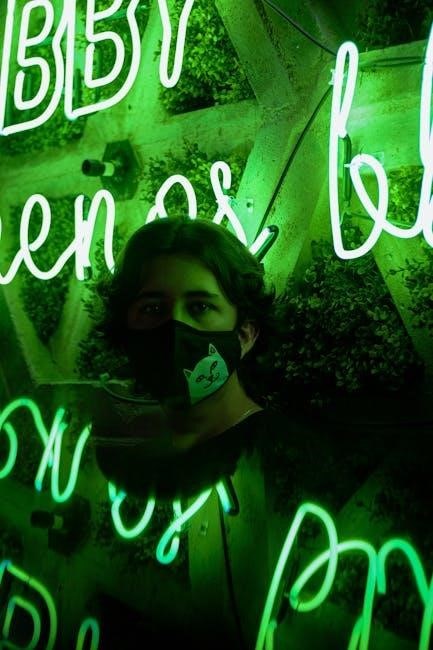
Primary Colors and Their Biblical Meanings
Primary colors in the Bible—red, blue, and yellow—carry distinct spiritual meanings. Red symbolizes flesh, passion, and sacrifice, while blue represents heaven and the Holy Spirit. Yellow signifies trials, glory, and God’s presence, reflecting His divine nature and plan.
2.1 Red: Symbol of Flesh, Passion, and Sacrifice
Red is a primary color in the Bible, symbolizing flesh, passion, and sacrifice. It represents humanity’s origin, as Adam was formed from the red earth. Red embodies intense emotions like love and jealousy, reflecting God’s passionate nature. In sacrifice, it signifies atonement, as seen in Christ’s bloodshed for redemption. This color also symbolizes divine judgment and the fiery trials that refine believers. Red’s profound meaning underscores its role in expressing both human frailty and divine redemption, making it a cornerstone of biblical symbolism.
2.2 Blue: Representation of Heaven and the Holy Spirit
Blue in the Bible symbolizes heaven and the Holy Spirit, representing divine revelation and truth. It is often associated with the sky and God’s throne, signifying His presence and sovereignty. Blue also embodies healing and restoration, as seen in its connection to the Word of God. In worship, blue flags and banners invite the Holy Spirit, emphasizing grace, mercy, and prophecy. This color reflects the calming and life-giving essence of God’s nature, making it a powerful symbol of spiritual renewal and divine connection.
2.3 Yellow: Trials, Glory, and the Presence of God
Yellow, often linked with fire, signifies God’s glory, trials, and divine presence. It represents refinement through fire, as seen in Deuteronomy 4:24 and Hebrews 12:29, where God’s consuming fire symbolizes His glory and judgment. Yellow also embodies endurance and faith, as mentioned in Romans 4:20, highlighting trust in God’s promises. This color is a reminder of His radiant presence and the transformative power of trials, leading to spiritual growth and a deeper connection with Him.

Secondary Colors and Their Spiritual Significance
Secondary colors, created by mixing primary hues, carry profound spiritual meanings in the Bible. They symbolize restoration, royalty, and divine glory, reflecting God’s transformative power and sovereignty.
3.1 Green: Immortality and Restoration
Green, a blend of yellow and blue, symbolizes immortality and restoration in the Bible. It represents eternal life and the rejuvenation of God’s creation. Psalm 1:3 mentions the evergreen tree, signifying steadfast faith and spiritual vitality. Green also embodies the heavenly realm, where life flourishes endlessly, reflecting God’s promise of renewal and eternal life through His divine plan. This color is a testament to the enduring nature of God’s work in the lives of believers and the world.
3.2 Purple: Royalty, Authority, and Kingship
Purple symbolizes royalty, authority, and kingship in the Bible, representing the majesty and sovereignty of God. It is often associated with kings and high priests, as seen in the tabernacle’s furnishings and royal apparel. The color signifies divine authority and the richness of God’s grace. Purple also reflects the spiritual reality of God’s kingship and the splendor of His majesty, emphasizing His reign over all creation and the authority vested in His people through faith in Him;
3.3 Amber/Bronze: Glory of God and Judgment
Amber and bronze represent the glory of God and His judgment, as seen in Ezekiel’s vision of the divine throne. These colors symbolize God’s radiant presence and His righteous judgment over humanity. They also signify endurance and refinement, as fire purifies and transforms. Amber and bronze serve as reminders of God’s holy nature and the ultimate reckoning, blending His mercy with justice and highlighting the transformative power of His glory in the lives of believers.

Black and Its Biblical Representation
Black symbolizes sin, death, and famine, representing darkness and separation from God. It also denotes strength and intensity, amplifying God’s truth and voice in biblical contexts.
4.1 Black as a Symbol of Sin, Death, and Famine
Black in the Bible represents sin, death, and famine, embodying darkness and separation from God. It signifies spiritual emptiness and judgment, often associated with mourning and desolation. For instance, Joel 2:10 describes the heavens mourning as sackcloth, symbolizing divine judgment. Black is also linked to the absence of light, reflecting humanity’s fallen state and the need for redemption. This color serves as a stark reminder of the consequences of sin and the necessity of seeking God’s mercy and grace in times of spiritual darkness.
4.2 Black as Strength and Intensity
Black in the Bible also symbolizes strength and intensity, representing God’s powerful voice and truth. It amplifies the spiritual significance of other colors when paired with them, signifying the magnification of divine messages. Black embodies the unyielding and passionate nature of God, often associated with His judgment and sovereignty. This color reflects the intensity of His presence and the profound impact of His Word, emphasizing spiritual strength and the unwavering power of His divine truth in the lives of believers.
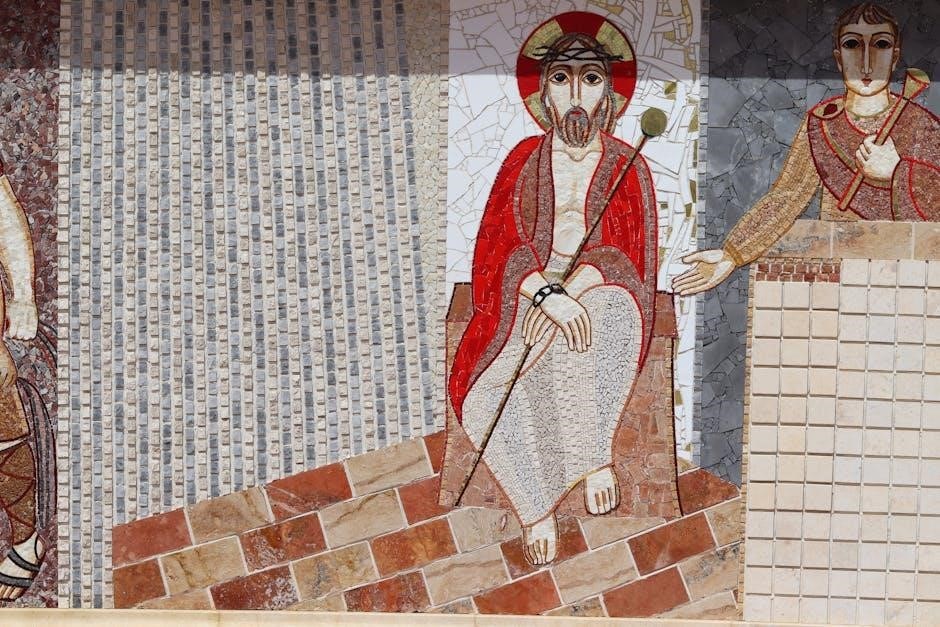
The Use of Colors in Worship and Prophetic Ministry
Colors in worship and prophetic ministry are used to express spiritual truths and welcome God’s presence. Flags, banners, and clothing symbolize divine messages and truths, enhancing worship experiences and prophetic expressions.
5.1 Flags, Banners, and Clothing in Worship
Flags, banners, and clothing in worship are powerful tools to express spiritual truths and welcome God’s presence. They symbolize divine messages, with colors like blue representing the Holy Spirit and green signifying restoration. Clothing, such as robes or prayer shawls, can also carry prophetic meanings, embodying righteousness or anointing. These elements create a visual representation of worship, aligning the congregation with God’s truth and enhancing the spiritual experience. Their use fosters unity and deeper connection with divine purposes, making worship more vibrant and meaningful.
5.2 Prophetic Meanings of Colors in Flags and Banners
Flags and banners in worship carry prophetic meanings, with colors symbolizing specific spiritual truths. Blue flags, for instance, welcome the Holy Spirit, while green banners represent restoration. Yellow often signifies God’s glory and divine presence, and red symbolizes sacrifice and passion. These visual elements amplify worship, creating a powerful declaration of God’s truth. By using color prophetically, they align the congregation with God’s purposes, intensifying the spiritual experience and fostering a deeper connection with His divine plan.
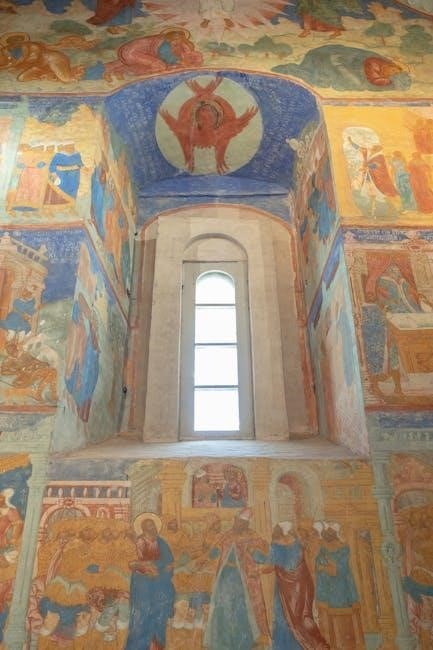
The Rainbow and Its Divine Significance

The rainbow symbolizes God’s covenant and divine promise, surrounding His throne in heaven, representing eternal faithfulness and mercy, as revealed in biblical texts and spiritual experiences.
6.1 The Rainbow as a Symbol of God’s Promise
The rainbow is a profound symbol of God’s covenant and promise, first seen after Noah’s flood, signifying divine mercy and faithfulness. Its vibrant colors—red, orange, yellow, green, blue, indigo, and violet—represent the fullness of God’s glory and His unbroken promises to humanity. Each color carries spiritual meaning, reflecting God’s character and redemption plan. The rainbow surrounding God’s throne in Revelation underscores His eternal faithfulness and the restoration of all things. It serves as a living reminder of God’s trustworthiness and enduring love.
6.2 The Rainbow Surrounding God’s Throne
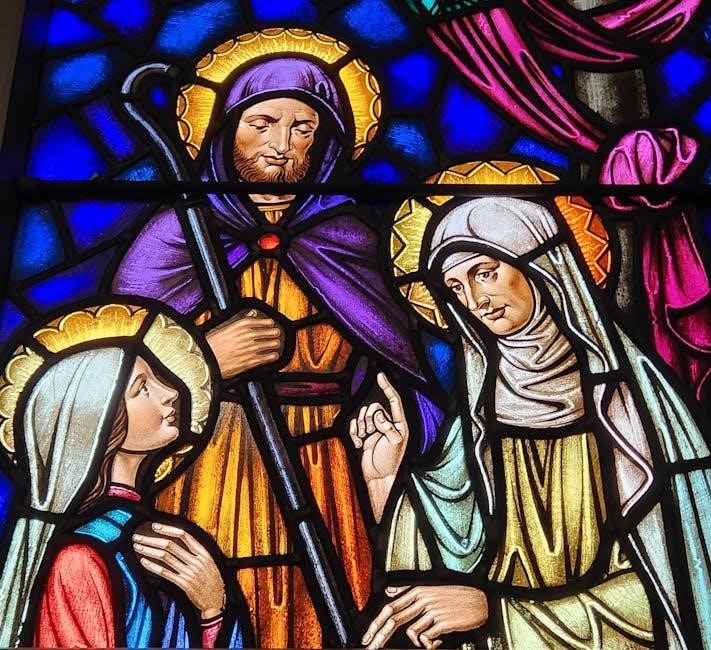
The rainbow encircling God’s throne, as described in Revelation 4:3, symbolizes His mercy, glory, and eternal promises. Its vibrant colors—red, blue, and the spectrum in between—represent the fullness of divine attributes and covenant faithfulness. This celestial display signifies God’s sovereignty and the harmonious blend of His justice and grace. The rainbow serves as a visual reminder of His unchanging nature and the promise of eternal restoration, bridging heaven and earth in a majestic display of divine splendor and enduring covenant love.
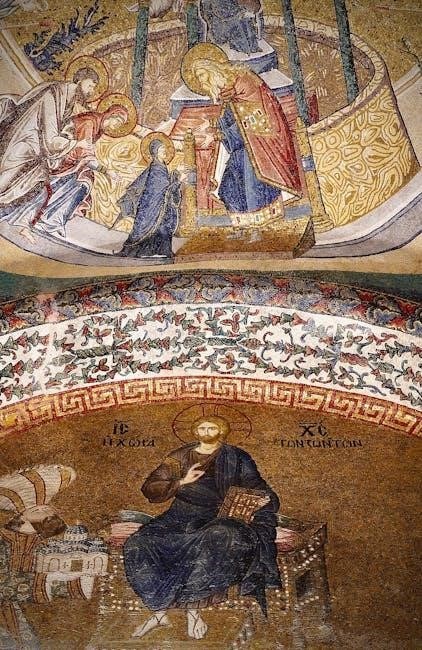
Colors in Heaven and the Heavenly Realm
Colors in heaven are described as vibrant and living, reflecting God’s divine character and promises. They are integral to worship and divine expression in the celestial realm.
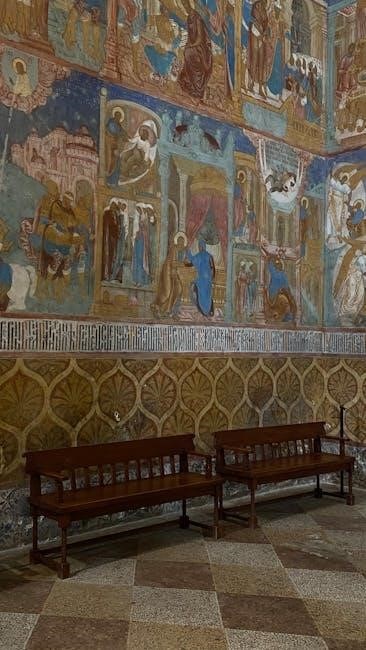
7.1 Colors as Living Entities in Heaven
In heaven, colors are not mere visual elements but living entities that radiate divine life and energy. They embody spiritual truths, emotions, and the essence of God’s nature, transcending earthly interpretations. These living colors communicate relationship and worship, reflecting the dynamic interplay of light and divine presence. Their vibrancy and intensity express the glory of God, creating an atmosphere of perpetual praise and adoration in the celestial realm.
7.2 The Experience of Colors in the Heavenly Realm
The heavenly realm is a place where colors are experienced as living expressions of God’s presence and glory. These vibrant hues surpass earthly colors, embodying divine attributes and emotions. They are not static but dynamic, interacting with the spirits of believers, conveying joy, worship, and the fullness of divine love. In heaven, colors are felt as much as they are seen, creating a multisensory experience that reflects the depth and richness of eternal life with God.